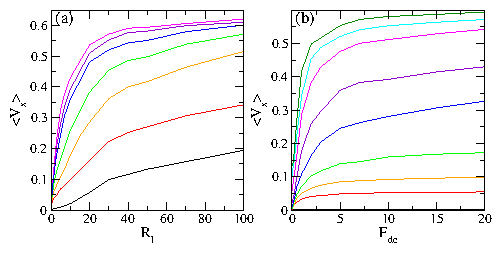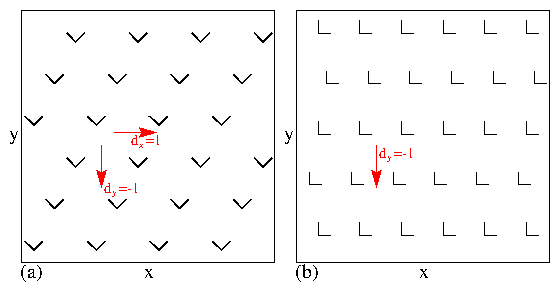 Figure 7: 〈Vx〉, the particle drift in the x direction,
for the L-shaped barrier system from
Fig. 1(b) with a dc drive applied in the negative y-direction
(dx=0, dy=−1).
(a) 〈Vx〉 vs Rl for Fdc = 0, 0.5, 1, 2.1, 5, 10,
and 20 from bottom to top.
At Fdc = 0 there is a ratchet effect in the positive
y and x directions. As Fdc increases,
〈Vx〉 increases.
(b) 〈Vx〉 vs Fdc for Rl = 0.1, 0.5, 1, 2, 5,
10, 20, 30, and 50, from bottom to top.
Here the effectiveness of the rectification in the x-direction
increases more strongly with increasing Fdc for smaller Rl.
Figure 7: 〈Vx〉, the particle drift in the x direction,
for the L-shaped barrier system from
Fig. 1(b) with a dc drive applied in the negative y-direction
(dx=0, dy=−1).
(a) 〈Vx〉 vs Rl for Fdc = 0, 0.5, 1, 2.1, 5, 10,
and 20 from bottom to top.
At Fdc = 0 there is a ratchet effect in the positive
y and x directions. As Fdc increases,
〈Vx〉 increases.
(b) 〈Vx〉 vs Fdc for Rl = 0.1, 0.5, 1, 2, 5,
10, 20, 30, and 50, from bottom to top.
Here the effectiveness of the rectification in the x-direction
increases more strongly with increasing Fdc for smaller Rl.
|
